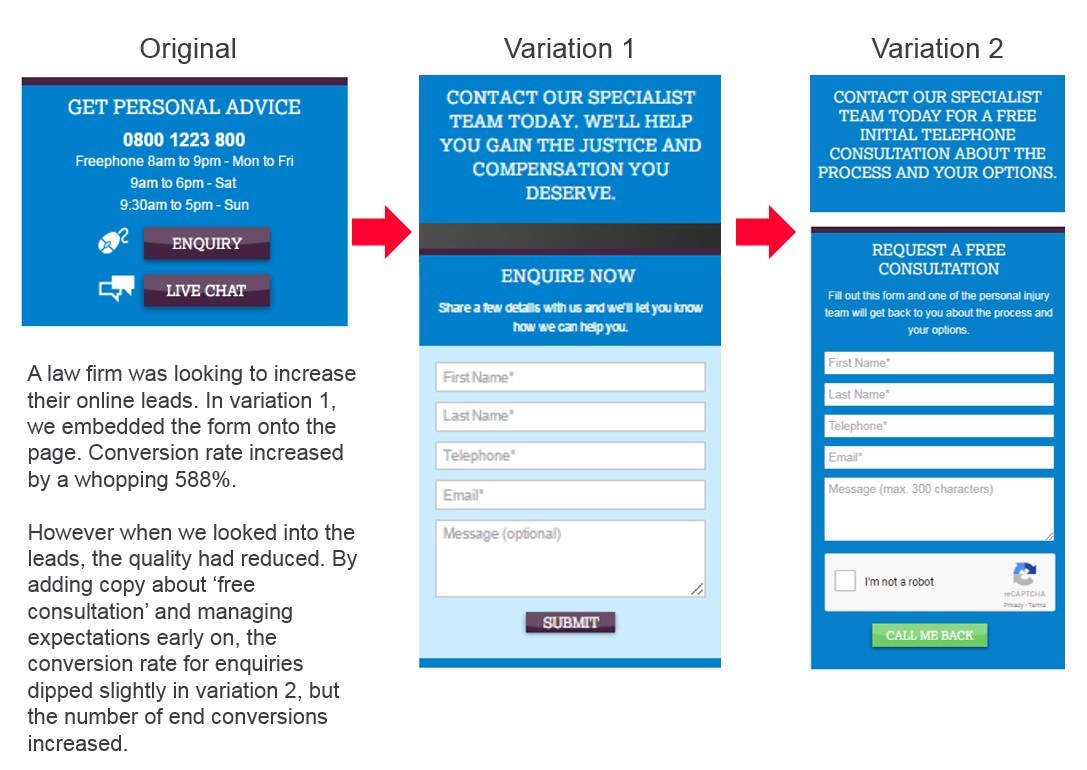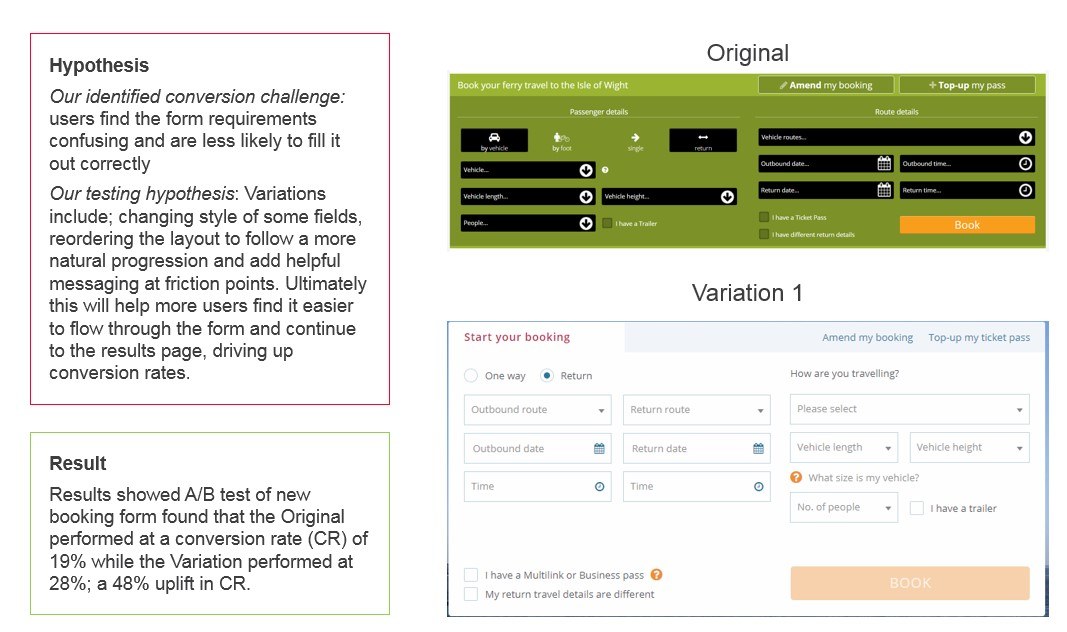Your website may look awesome - the pinnacle of design. It may receive great traffic numbers. But something’s not quite working; sales are trickling in and only a few enquiries making it through. What you have, my friend, is a conversion problem.
Optimising your website for conversion can be a tricky business, and it’s an often-overlooked part of the website design process. But why spend money having a great (looking) website designed and driving traffic to it, if that traffic isn’t going to convert?
Everyone’s heard the basic things to do to try and improve conversion rates. So, we’d like to take you a little further into how conversion optimisation can help you gain a competitive advantage.
I give you our top 10 advanced conversion rate optimisation tips.
10 Advanced Conversion Rate Optimisation Tips
1. Quality not - necessarily - quantity
The business target is often ‘more’; more leads, more newsletter signs up, more purchases. But conversion rate optimisation (CRO), isn’t about getting lots of low quality responses. No, it’s about driving the right responses.
If you slash the costs of your products to drive more sales but your revenue drops, it won’t help your overall business performance. Instead, understand the value of your KPIs and make sure you increase the value being generated at the end of the funnel.

2. Your business is unique
There is no such thing as a ‘one size fits all’ solution. Conversion optimisation won’t work if you don’t have a good understanding of the needs of your target audience and your own product proposition.
To make sure you get to the bottom of what works best for you, you need to test, test, test. Is your landing page relevant to its target audience? Are you communicating your company USPs effectively? Are you giving your prospective customers a sense of urgency?
To help you make a start we’ve put together a landing page scorecard so you can see how your website’s doing.
3. Challenge the HiPPO (Highest Paid Person’s Opinion)
It may be that the way your website and landing pages are constructed is down to the way your HiPPO thinks it will work best. Sometimes that works, but more often it simply doesn’t.
Use conversion optimisation to diplomatically show the senior stakeholders in your business that there may be a better way of doing things compared to ‘their way’. But make sure you use empirical evidence (most likely A/B testing) to back up your points, or they may not resonate.
4. Extract insight from data
Every business, to a greater or lesser extent, has access to business data. But data alone is relatively meaningless. Instead, try and dig deeper into the data delivered by your reporting tool.
This approach will help you uncover new opportunities for improvements to the user journey through your website. Try to understand why the weak points exist in the first place and develop ideas for tests.
For more ideas about how you can effectively turn data into insight (and wisdom), check out our ‘8 tips for getting insight from analytics’ >>>
5. Get user feedback
The data in your reporting tools can only tell you so much. Watch real people using your website, whether it’s in a coffee shop, using online tools or in a professional usability studio.
Do so and you’re guaranteed to witness things that you didn’t expect! We’ve outlined a few of the on-site survey tools out there and what we make of them think of them here >>>
6. Construct hypotheses for testing
When looking at a landing page that isn’t converting to its potential, you might have a few ideas - hypotheses - about what could be creating a barrier to conversion. Testing these hypotheses is a great way to make incremental improvements to website performance.
Having said that, it’s important to interrogate your hypotheses. Make sure you carefully consider why you are testing a specific hypothesis. Testing something for the sake of it is a recipe for wasted time.
Here’s a bit more about testing hypotheses and why you shouldn’t just jump into testing everything >>>
7. Test significant changes first, refine later
In order to build confidence in conversion and justify spending time on it, you need to show it can be successful. You are unlikely to demonstrate something significant by making small refinements - instead test a big change, but be confident in the planning you’ve done to justify it.
8. A/B test (if you can)
A/B testing is not always possible (e.g. if visit volumes are low), but it is preferable to use an A/B testing tool to allow you to compare your changes to the original version of a page. A/B testing is the best way to see if your new changes are actually working, and not because of any external factors influencing the data (such as the weather!).

9. Don't stop
There’s no such thing as a perfect landing page. There are always more people to convert into customers. Conversion optimisation is a continual process of opportunity discovery. You should never be satisfied that your success metric is high enough, and there are always small changes you can make and test.
As a baseline, set aside some time every month to create a new set of hypotheses and test them out. Who knows, you might find something that drastically improves conversion rates and transforms your business performance.
10. The bigger picture
Often we can mistakenly focus our optimisation efforts on converting as many people as possible right now. As humans we love instant gratification. But that’s not necessarily the correct approach.
The focus should be overall experience.; Think about how you can create a better experience for your users, and ensure that you are offering value for your product or service in return. Using this approach will result in long-term brand advocates with higher individual value attributed to repeat custom.
Conversion insights can also be applied across the business, not just the website. A particular page headline that resonates with your users could be used as messaging in other marketing material as well.
I’ve given you some tips here to start thinking of your website with your optimisation hat on, but if you’re looking for experts to take it one step further, get in touch at hello@search-star.co.uk.